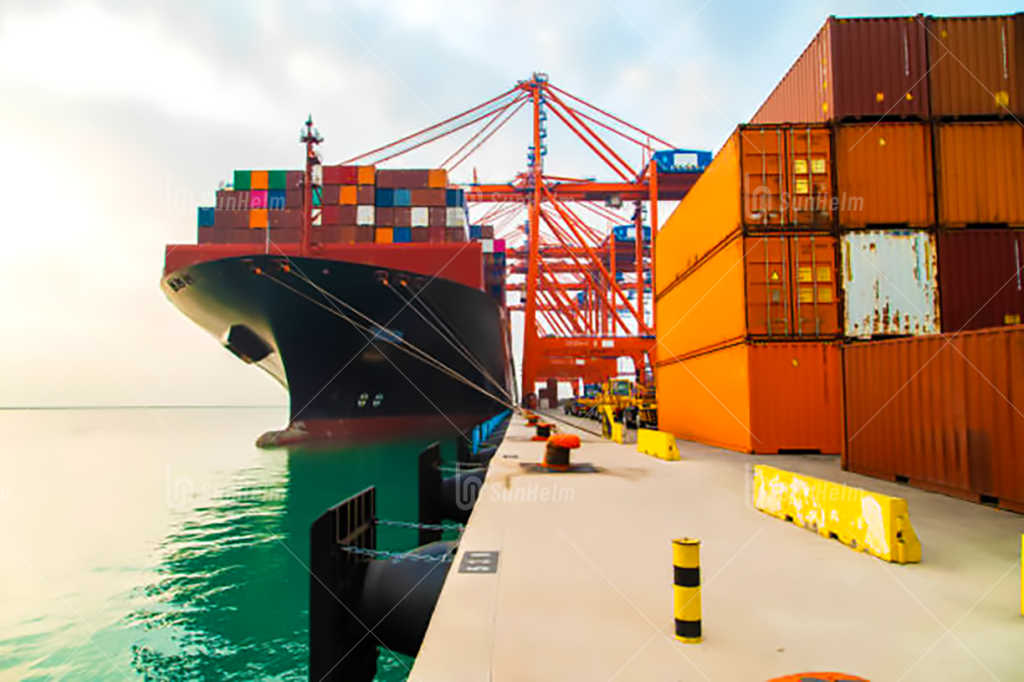Arrival Procedures for Ships at Chinese Ports
When a large vessel approaches a busy Chinese port, every second counts. A delayed customs clearance, missing health document, or failure to book a pilot in time can cause major operational losses. But even when paperwork is in order, the physical process of docking a ship safely is just as critical—and that’s where reliable fender systems come in.
From Shanghai to Shenzhen, Chinese ports handle high traffic and tight schedules. As more ship-to-shore operations rely on speed and safety, pre-arrival procedures and high-quality marine fenders work hand in hand to reduce risk and downtime. Damaged hulls, harsh impacts, or unstable mooring situations can all be avoided with the right preparation—and the right equipment.
In this article, we’ll walk through each step vessels must take before entering a port in China—and why fendering solutions are more than just a final step.

1. Arrival Notice Early
Captains or agents must send an Arrival Notice at least four working days (96 hours) before arriving at a Chinese port. They include vessel and crew details, cargo info, and any special issues. This notice helps port authorities plan inspections and smooth operations.
2. Border & Immigration Checks
Chinese customs and immigration inspect the ship, crew, passengers, and cargo. Captains or agents submit crew and passenger lists and health records. Foreign crew or travelers who wish to go ashore must get permission, often by using immigration checkpoints or automatic e‑channel systems.
Cruise ship tourists traveling in approved groups may qualify for visa-free entry for up to 15 days at certain ports like Shanghai, Tianjin, Guangzhou, Xiamen, Shenzhen, etc.
3. Health & Quarantine Inspection
Before arrival, foreign crew must complete health checks within 48 hours. Temperature checks, health and vaccination certificates, and luggage inspections are routine.
4. Port State Control Inspection
China’s PSC officers board the vessel to verify safety, pollution compliance, crew qualifications, and valid certificates. If they find serious issues, they may fine or detain the vessel.
5. Customs & Cargo Clearance
Customs officers review all documents: cargo manifest, crew list, passenger list, and certificates. They may open containers or inspect cargo, before approving the vessel to berth or depart.
6. Pilotage & Navigation
Foreign vessels and large ships must use a pilot (local navigation expert). The agent arranges for the pilot boarding, usually about one hour before docking. The captain and pilot communicate by VHF radio and follow port traffic rules.
Vessels must report ETA to the VTS center at least 24 hours before entering the port traffic area. They must also report positions at key points.
7. Final Steps & Berthing
Once authorities complete checks, the port grants official permission to berth. Crew and company should log all inspections and procedures. Agents assist with paperwork, fees, and final clearance.
Final Thoughts: Plan Ahead, Fender Smart
Chinese ports are fast, busy, and tightly managed. That’s why every ship—whether it’s a tanker, cargo vessel, or cruise liner—needs to follow the rules before arrival. Missing a health form or delaying your customs notice can slow everything down. But even if your paperwork is perfect, safe docking still depends on the right gear.
At the final stage, marine fenders are the last line of protection between your vessel and the hard concrete of the berth. Investing in reliable pneumatic or foam fenders isn’t just about safety—it’s about keeping your schedule on track, avoiding hull damage, and protecting everyone onboard.
So plan early, communicate clearly, and don’t overlook your fendering system. When it comes to port entry in China, being prepared is the best way to stay ahead.
FAQ ‑ Frequently Asked Questions
Q1: How early must the ship send arrival notice?
A: Captains or agents must send it at least four working days (96 hours) before port entry.
Q2: Can cruise tourists visit China without a visa?
A: Yes, foreign tourists in approved cruise group tours can stay up to 15 days visa-free at certain ports if they meet group travel rules.
Q3: Do crew members need health checks?
A: Yes. Foreign crew need health certificates within 48 hours before arrival.
Q4: What happens during Port State Control inspection?
A: PSC officers verify safety and pollution rules, crew certificates, ship condition. Ships may be fined or detained if major issues are found.
Q5: How does pilot boarding work?
A: Agents arrange a local pilot who boards about one hour before docking. The ship monitors VHF channel and follows pilot’s instructions.
Q6: Must vessels report their ETA and positions?
A: Yes. Vessels must report ETA to VTS at least 24 hours before entering. They also report at certain reporting points inside the traffic zone.
The process ensures safety, health, border control, and environmental compliance, and it follows both Chinese laws and international conventions. If you’d like details for a specific Chinese port—like Shanghai, Ningbo, or Shenzhen—or local rules, I’m happy to help!


